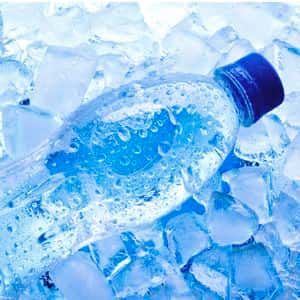
When you are working out in hot weather, you need to replace the fluids you lose through sweat. That is only common sense. Researchers in Missoula, Montana, wondered whether the water temperature matters, so they devised a test.
Studying Water Temperature and Re-Hydration:
The scientists had healthy athletes exercise for three hours at 88 degrees Fahrenheit. Then they compared the effectiveness of three re-hydration strategies: drinking air-temperature water at a rate of 2 grams of water for each kilogram of body weight; drinking the same quantity of an ice slurry of shaved ice and water; and drinking half as much ice slurry. The drinks were provided at 10 minute intervals, and the athletes were randomly assigned to the rehydration strategies.
Which Water Temperature Worked Best?
The athletes maintained their body temperature, heart rate and physiological well-being best with the full amount of ice slurry, but the reduced amount of slurry was just as good as ambient-temperature water. The researchers believe this information will be valuable for the military and firefighters working on forest fires. That’s because when people carry more water in such high-exertion warm-weather situations, they have to carry less gear. The researchers gave no advice on how to keep an ice slurry cold in extreme conditions.
Wilderness and Environmental Medicine, Sept, 2016
Be Wary of Hyponatremia:
Consuming a smaller quantity of ice water for recovery might also reduce the possibility of hyponatremia. When active people consume extra water in an effort not to become dehydrated, their sodium level could become too low. Essentially, the sodium in the blood becomes over-diluted. This puts a serious strain on the system and can produce symptoms such as muscle cramps, nausea and vomiting, confusion and even seizures.

